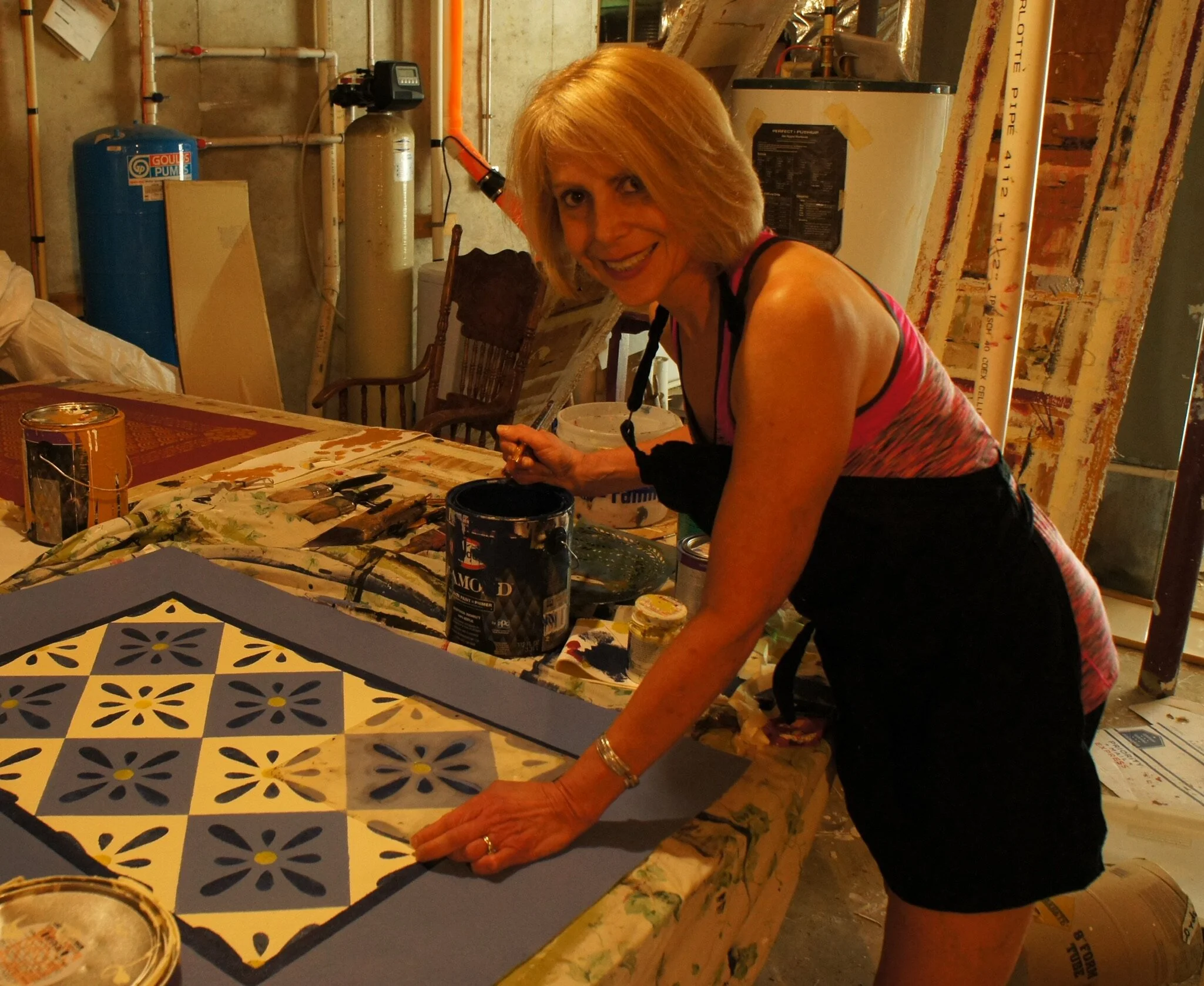About Me and the Process
I have always loved the durability and look of floorcloths, so much that I began making them for my own home.
The process I use is very similar to the historical method, only with better, more modern tools and water based paints and finishes. Just as in days past, curing time between coats of product is vital, thus floorcloths take time to be created properly. Read Below for a brief history of floorcloths.
A well-made floor cloth begins with high quality, heavy canvas. At Designs By Grace, I use a heavy canvas, which comes in widths as wide as 10 feet and as many yards long as I wish. This 100% cotton material initially shrinks when dampened ,so it must be stretched and primed before any artwork is done. My rugs are primed with 4 coats of primer, two on each side. After the priming, two coats of base paint are applied. Then the project is cut to shape and the designs drawn on the canvas. After the penciling and measuring, the hand painting and stenciling begin.
Finally, five coats of a clear, protective, water-based polycrylic are applied to the top of the cloth. Each floorcloth has a 1.5 to 2 inch mitered and folded under hem. The maintenance section of my website explains a simple way to care for your rug to promote years of enjoyment and use.

A History of Floorcloths
Floorcloths are a uniquely American heritage craft, but have their origins in early 15th century France. They were a direct spin off from table runners, tapestries, and painted wall hangings from the old world. The British were the next to adopt this artwork featuring diamonds, cubes, squares and checkers. They were hand painted, often by the lady of the house, as a way to imitate the flooring in fashionable homes without the expense of fashionable marble and stone. Private home owners making their own cloths often met with calamitous results. Issues such as improper paint bonding, and inadequate curing times caused cracking. The use of linseed oil and lead also caused cracking issues. Today artisans such as myself use water based products which eliminates the cracking. These rugs were often referred to as crumb cloths because of their use under dining room tables. They had the additional bonus of making the floors warmer in winter and were insect and water repellant.
These floorcloths became widely popular during the American colonial period. They were first created and imported from England prior to 1754. Several companies in Boston, Philadelphia and New York were producing them here in the US. Private home owners made their own floor cloths, often from recycled ship sails. The arrival of linoleum in the 1920's slowed floorcloth production, bringing it to a halt. During the 1980's the interest in historical American home furnishings revitalized this craft.
At least three presidents, George Washington, Thomas Jefferson, and John Adams, according to their estate inventories, owned floorcloths. Monticello and the White house have been reported to house some of these rugs.

